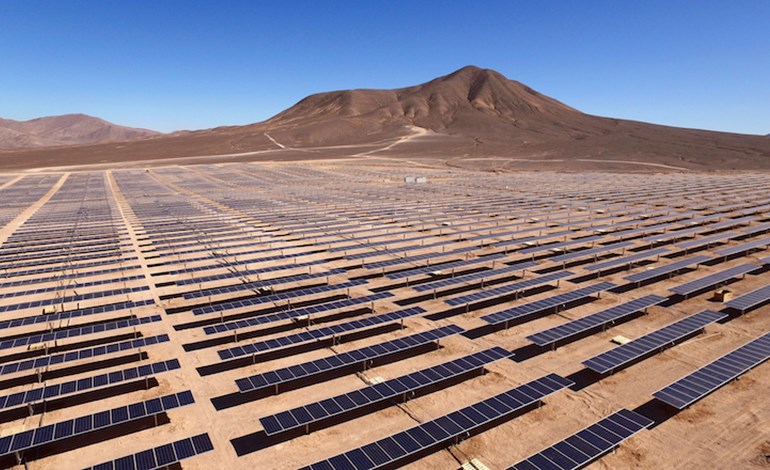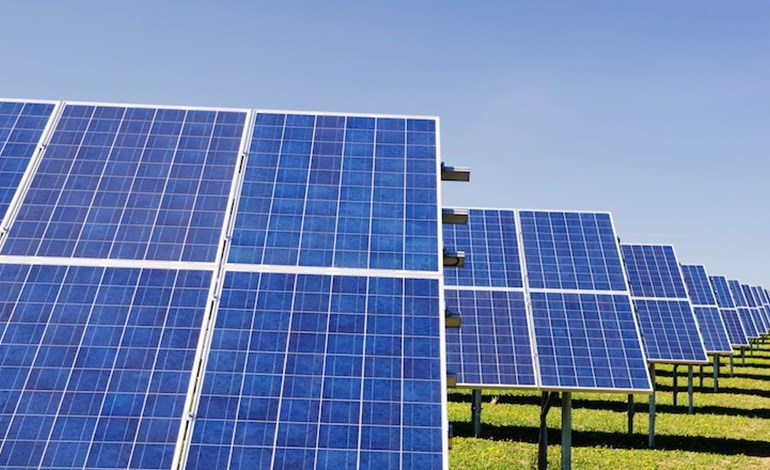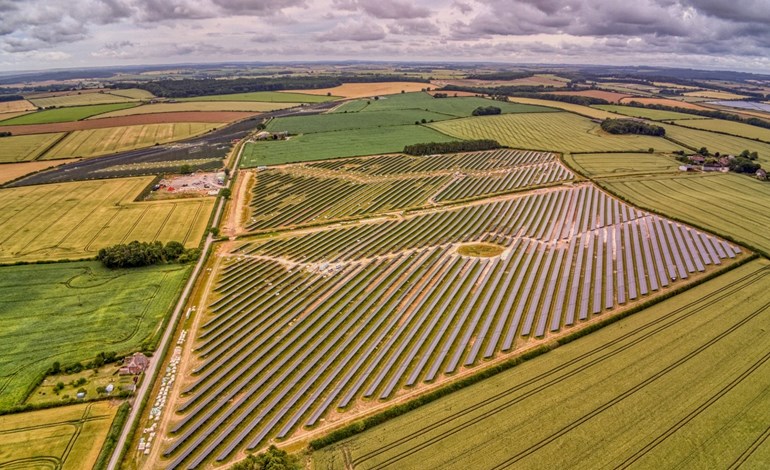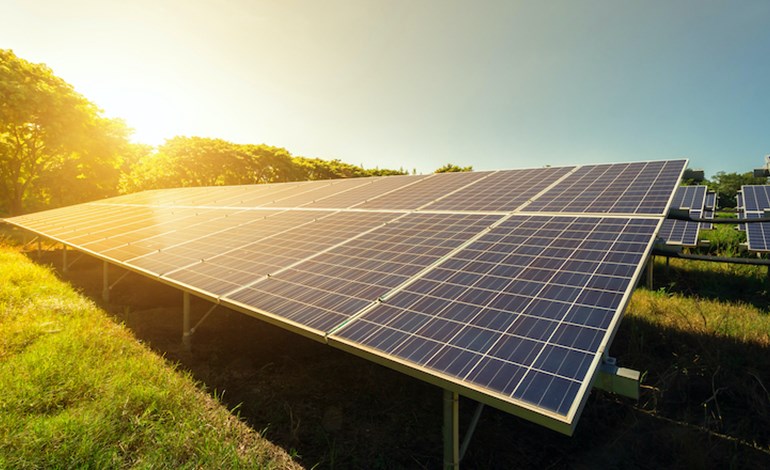The global floating solar market is expected to pass the 6GW threshold by 2031, as PV developers struggle to meet growing solar demand and look to alternate development technologies, according to analysis from Wood Mackenzie. Floating solar is expected to have a steady market share compared to overall global solar demand, with the compounded annual growth rate (CAGR) for floating solar (FPV) expected to rise 15% in the next ten years. Wood MacKenzie forecasts that 15 countries will exceed 500MW of cumulative FPV installations by 2031, with Indonesia, India and China making up almost 70% of the total FPV demand in 2022. The Asia-Pacific market had approximately 3GW of floating solar projects in 2022, capturing over 90% of floating solar demand that year, according to the analysis. Countries such as China, Indonesia, India, South Korea, and Thailand are developing multiple floating solar projects, it found. In China, the floating solar project pipeline will grow at a steady pace going forward, with cumulative floating solar capacity to cross 13GW by 2031 at a 12% CAGR over the next 10 years, according to the research. With almost 150MW, Europe is the second largest region for FPV demand, with the Netherlands in the lead followed by France. The Netherlands has the largest FPV project outside the Asia-Pacific region, representing 32% of Europe’s FPV market in 2022, helped by the Sellingen floating solar park (41.4MW) that came online in 2021. This reflects how project sizes are continually growing in Europe’s leading market, Wood Mackenzie said. Ting You, consultant at Wood Mackenzie said: “The global solar industry, including PV developers, continue to battle limited land availability and increasing land costs for ground-mount solar projects, which is driving demand for floating installations.” Credits: renews.biz [Image: BayWa r.e]
Lightsource BP Commissions Indiana Project
Lightsource BP has announced commercial operation of its Bellflower Solar project, located about 40 miles east of Indianapolis in Henry and Rush Counties. Lightsource BP developed, financed and will own and operate the 152.5MWac project, and has entered into a virtual PPA with Verizon to offtake the energy generated. The solar farm is expected to offset the equivalent of 202,000 metric tonnes of carbon dioxide emissions each year, improving air quality while furthering Verizon’s goal of being carbon neutral in its operations (scope 1 and 2) by 2035. James Gowen, senior vice president of global supply chain and sourcing, and chief sustainability officer at Verizon, said: “Verizon is committed to protecting our planet by supporting the production of renewable energy and the transition to a greener US energy grid. “The renewable energy produced by the Bellflower Solar project will help us achieve net zero operational emissions by 2035.” The Bellflower solar farm brings many environmental benefits to Indiana, in addition to improving air quality by reducing carbon dioxide emissions from electricity generation. Lightsource BP planted 800 acres of land under and around the solar panels with vegetation that includes native species beneficial to pollinators and other wildlife, which will be conserved for decades. An additional 10 acres has been dedicated to lush pollinator gardens with more than 60 different types of flowering plants. The solar farm is also participating in a research study which will measure the ecological benefits of pollinator habitat at utility-scale solar. The research team consists of the University of Illinois Chicago, the University of Illinois Urbana Champaign, the Argonne National Laboratory, and the National Renewable Energy Laboratory. In addition, land under and around the solar panels is also being kept in agricultural production. A local commercial beekeeper is managing hives and will produce solar farm honey, while another local Indiana farmer will graze sheep to help maintain the vegetation. Kevin Smith, chief executive of the Americas at Lightsource BP, said: “The Bellflower project is a great example of our commitment to responsible solar development in action. “Beyond delivering clean, affordable and reliable energy, Lightsource bp has a deep commitment to maximizing the sustainable benefits of our solar projects for communities, protecting ecosystems and improving biodiversity.” Credits: renews.biz [Image: Lightsource BP]
Repsol, Ibereólica Chilean PV Project Powers Up
The first phase of Repsol Ibereólica Renovables Chile’s initial joint solar project in country is now producing electricity for the grid. Repsol and the Ibereólica Renovables Group’s JV Elena photovoltaic plant now has 76.8MW of installed capacity, extending to 596MW once the whole project is completed. Once fully operational, the Elena photovoltaic plant will generate enough renewable energy to supply more than 554,000 Chilean households and will prevent the emission of approximately 1.19 million tonnes of CO2 into the atmosphere. Repsol’s executive managing director of Low Carbon Generation João Paulo Costeira said: “Our partnership with the Ibereólica Renovables Group, a highly experienced partner with strong renewable energy capabilities, allows us to meet our growth and diversification goals in Chile, a country that offers us great potential for asset development and that will contribute to reaching our goal of 6000MW in operation by 2025.” Gregorio Álvarez, founder and president of the Ibereólica Renovables Group, added: “It is a great pleasure to be able to celebrate the start of electricity production from the Elena photovoltaic plant, the result of collaboration with Repsol, a partner that has once again demonstrated its commitment to the decarbonisation of the country and with whom we have managed to lay solid foundations on which to jointly develop a more sustainable future for Chile.” Credits: renews.biz[Image: Antonio Garcia/Unplash]
UK Hits Renewables Generation Record
The UK has hit a major milestone, passing one trillion kilowatt-hours (kWh) of electricity generated from renewable energy sources. The data from National Grid analytics reveals that it has taken 50 years to reach the milestone, and based on current projections, will take just over five years to reach the next trillionth kWh. Records began in 1970 when renewables represented 1.9% of total generation, with hydro being the main source at the time (4.5TWh). The data indicates that offshore and onshore wind and solar entered the generation mix in 2010, in line with the emergence of key pieces of legislation including the Energy Review in 2006 and the renewable energy directive in 2009. Last month April 2023, 46% of Britain’s electricity came from zero carbon sources according to the National Grid ESO’s monthly electricity statistics. The month also saw a new low carbon intensity record of 33g/kWh on 10 April with just 0.1% of generation from coal. Ben Wilson, interim president for National Grid Ventures, said: “This major milestone re-affirms the UK’s position as world leaders in renewable energy and highlights the vital role renewables play in our transition to a cleaner energy future. “Accelerating the delivery of renewable energy must continue to be a priority for a cleaner, more secure and more affordable energy future for everyone, but it requires the right framework to make it happen. “We are committed to working with government and our partners to make it a reality.” Credits: renews.biz [Image: National Grid]
UK Solar Farm Gets Green Light
Planners have given the green light for a 30-hectare 16MW solar farm near the Shropshire village of Allbrighton in England. Being developed by Boultbee Brooks’ Renewable Energy arm and Infraland, County Lane Solar Farm will generate enough renewable energy to power approximately 5,000 homes, saving 3,600 tonnes of CO2 each year. Additionally, planting of species-rich grass, wildflowers and new hedgerows around the site will significantly benefit the environment by increasing the area’s net biodiversity by as much as 99%, the developer said. The JV partnership has now delivered 90MW of consented sites and is working on a further 300MW pipeline of similar projects across 16 UK developments. Boultbee Brooks managing director James Whitcher said: “Together with Infraland, we are working to develop a new portfolio of efficient and biodiverse solar parks across the UK. “We are delighted to have achieved consent for this project. Co-founding director of Infralan, Nick Barber added: “We are thrilled to have received another planning consent for our project at Albrighton. “We will be overseeing the construction, delivery and ongoing asset management, demonstrating our commitment to the project, which is due to commence in 2024.” Credits: renews.biz [Image: Zbynek Burival/Unplash]
Government Kicks Off Electrolytic Hydrogen Consultation
The UK Government has issued a call for evidence to inform the UK’s transition to price-based competitive allocation for renewable hydrogen production. The British Energy Security Strategy sets out annual allocation rounds for electrolytic hydrogen, moving to price-based competition by 2025 as soon as legislation and market conditions allow. The purpose of this call for evidence is to gather evidence to understand more about market conditions needed for the UK to transition to price-based competitive allocation for electrolytic projects and potentially other specified non-carbon capture, usage and storage technologies. The consultation also aims to understand the extent to which a price-based competitive allocation process could incentivise projects to support broader outcomes beyond cost reduction of low carbon hydrogen production. These could include harnessing electricity system benefits, economic benefits and supply chain development, security of supply of hydrogen as well as how price-based competitive allocation should be designed. The consultation closes on 2 August 2023. The Government expects this call for evidence to be of particular interest to developers of new electrolytic projects and other non-CCUS low carbon hydrogen production projects in the UK, businesses involved in low carbon hydrogen production supply chains, electricity suppliers, consumer and environmental groups with an interest in low carbon hydrogen production and trade bodies with an interest in low carbon hydrogen and renewables sectors. The Department for Energy Security and Net Zero will also hold a launch briefing event on the HAR2 market engagement document and the call for evidence on competitive allocation on 25 May. Credits: renews.biz [Image: Hydrogen Web]
£25m Boost For UK PV Project
Santander UK has provided £25m funding to Voltalia subsidiary South Farm Solar, to support its construction and operation of a new PV project that will deliver more than half of the City of London Corporation’s electricity. South Farm is a 49.9MW ground-mounted solar farm near Spetisbury, Dorset that has been developed, constructed, operated and maintained by Voltalia. On site grid connection has been secured with Southern Electric Power Distribution with an export capacity of 40MW, connecting to an existing tower with 132kV overhead line. The South Farm site is now complete having achieved grid connection certification in December 2022, and it began providing the City Corporation with electricity in January, powering iconic London landmarks such as Tower Bridge, Hampstead Heath, the Barbican Centre and its historic Guildhall headquarters. South Farm represents Santander UK’s further support of renewable energy generation assets that do not rely on Government subsidies. The bank’s funding package also provides South Farm Solar Ltd with Consumer Price Index (CPI) hedging, giving it more certainty over the amount of revenue the solar farm will generate over the next 15 years, according to the lender. 100% of the power generated by South Farm has been purchased by the City Corporation, which has a 15-year PPA with South Farm Solar Ltd. The deal is part of the City Corporation’s Climate Action Strategy, which commits it to reaching net zero in its own operations by 2027, and in its investments and supply chain by 2040. It is also supporting the achievement of net zero for the whole Square Mile, one of London’s financial districts, by the same year. Voltalia has undertaken 23 new renewable energy facility projects with a combined capacity of 193MW in the UK. South Farm is its largest solar energy facility to date and is located near its other solar photovoltaics farms at Clifton Farm, near Yeovil, and Higher Stockbridge. UK country manager at Voltalia Simon Holt said: “Through our work with Santander UK in funding the South Farm project we have been able to fully realise a brand new, substantial green energy project at South Farm, Dorset. “We expect an increasing number of companies and organisations in the UK to be switching to cleaner, sustainable, renewable energy supplies and we will continue to deliver a net-zero power purchase solution as our portfolio grows. “The UK has the capacity, enthusiasm and the sunshine to deliver many more of these projects in the coming decades and we hope that projects like South Farm add to the bankability and confidence in UK renewables.” Credits: renews.biz [Image: Santander UK]
TotalEnergies Signs Californian Solar, Storage PPA
Mineral-based specialty solutions supplier Imerys is collaborating with TotalEnergies to install a large-scale solar power system paired with battery energy storage at its Lompoc facility in Santa Barbara County, California. The move forms part of a long-term energy services contract. Under the agreement, TotalEnergies will install, maintain and operate at its Lompoc facility an approximately 15MWdc ground-mounted solar array and 7.5MWh energy storage system for Imerys under a 25-year Power Purchase and Storage Services Agreement (PPSSA). The Lompoc industrial site began its diatomite mining and processing operations in the 1890s. The new renewable power installation will cover 50% of the current electrical energy demand of the site. Imerys vice president for performance minerals in the Americas Jim Murberger said: “This project highlights Imerys’ approach to reducing CO2 emissions and enabling us to produce clean, smart energy across our plants in the Americas. “This is a pivotal step to combat climate change and to manage the energy we buy in the region as we continue to invest and develop low-carbon products for our customers as well as extract and transform minerals responsibly and sustainably.” The TotalEnergies Distributed Generation USA team first engaged with Imerys to evaluate which of the company’s US facilities offered the greatest viability for solar. Under the PPSSA agreement, TotalEnergies will finance, install and operate the Lompoc facility’s solar-plus-storage system. Managing director of TotalEnergies distributed generation USA Eric Potts said: “We remain committed to helping Imerys achieve its sustainability goals with projects around the world, now with a focus on their US operations. “TotalEnergies is proud to be one of Imerys’ energy transition partners, and we applaud the company for investing in solar power and energy storage to reduce its environmental impact.” TotalEnergies currently has more than 1GW of signed solar capacity with over 500 business and public agency customers worldwide. The deployment of this capacity is expected to be completed by the end of 2023. The solar-plus-storage system at Imerys’ Lompoc site, which is expected to be fully operational in three years, features a ground-mounted single axis tracker solar PV system with bi-facial modules to maximize energy generation and will produce roughly 30GWh annually. Credits: renews.biz [Image: TotalEnergies]
RWE Invests €8bn In green Portfolio In Q1
RWE invested €8bn in growing its portfolio of renewable and green energy investments in the first quarter of 2023. As part of its Growing Green strategy, the German energy company expanded its green portfolio by 4.9GW in Q1, reflecting investments of €8bn. The €6.3bn acquisition of Con Edison Clean Energy Businesses in the US represented the largest share of the investments. In addition, RWE acquired a hydrogen-ready gas-fired power station in the Netherlands and took over British solar developer JBM Solar. In the first months of the year, RWE also invested in new wind, and solar facilities and also commissioned further plants. Additional facilities with a capacity of 6.8GW are under construction. The largest individual projects are offshore wind farms Sofia off the UK coast, at 1.4GW, and Thor in Denmark, at 1GW. Onshore, too, RWE is pressing ahead on the expansion of wind power with more than 17 projects totalling 600MW in Europe and the US. Solar energy represents the largest share of new-build projects, at 2.7GW, mainly in the US. In addition, RWE is expanding its global battery storage portfolio, with projects totalling 900MW under construction in Germany, the US and the Netherlands. Michael Müller, Chief Financial Officer of RWE, said: “The continuous construction of new renewable energy facilities and our acquisitions are paying off. In the first quarter of 2023, we generated 14% more green electricity than in the same period last year. “And we have the financial resources to continue investing strongly in organic growth this year. Our project pipeline is well filled, and the forthcoming auctions open up further attractive opportunities for us. Last month RWE released preliminary results for Q1 2023. Its offshore wind business achieved €473m in adjusted earnings before interest, tax, depreciation and amortisation (EBITDA) in the first quarter of 2023, compared to €420m year-on-year (YoY). Credits: renews.biz [Image: RWE]
UK Power Networks Procures 400MW In Flexibility
A “UK first” product is set to deliver more than 400MW of additional electricity capacity, as UK Power Networks announces the results of its latest flexibility tender. The new product is enabling UK Power Networks to efficiently connect more renewable energy to the network and avoids spending “substantial sums of customer money” on major network reinforcement for capacity that may only be needed for a few hours a year. For the first time, UK Power Networks has awarded contracts to distributed energy resources and aggregators to increase demand or turn down supply during periods of excess power. The flexibility tender attracted more than 1000MW of flexible capacity against requirements of 426MW, providing competition that will drive down costs. As it has done previously, UK Power Networks also procured flexibility to turn down demand at times of peak consumption. In April this year, UK Power Networks established itself as the UK’s first independent Distribution System Operator (DSO). The DSO has committed to saving customers £410million over the next five years by using flexibility to deliver capacity on the network at lower cost than building new infrastructure. The company’s latest tender round saw it seek bids for flexibility from 1037 sites, up from just 28 in its first ever flexibility tender in 2018. Credits: renews.biz [Image: UKPN]










